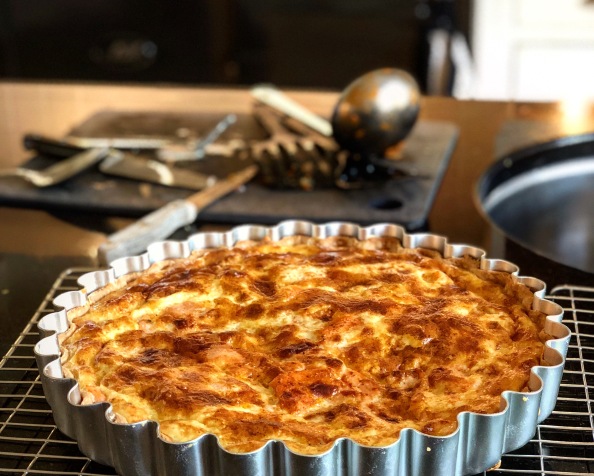What frightening and difficult times we live in. I hope you are coping with the lockdown and that you and your loved ones are staying safe and well. There are four of us here. My youngest son is home from university, possibly until the Autumn; this is lovely for my husband and me. We took the decision to dispense with the services of the carers who were coming in every day to look after my frail and demented 95 year old mother-in-law. We just felt the risk of the virus being brought into the house was too high. It means there is even more for us to do but of course we are here and have the time to do it.
We are trying hard not to go to the shops and have been lucky enough to get a couple of online supermarket orders delivered. Our excellent local butcher, Ruby and White, has also set up an online delivery service. This means I have not (yet) been unable to cook my chosen dish for want of the necessary ingredients.
I have turned more than once recently to Diana Henry’s most recent book, From the Oven to the Table. You will remember I cooked this chicken with sherry and torn sourdough recipe from it a while ago. Last week I made the Sausages and Lentils with Herb Relish, which I want to recommend to you. I have begun to feel uncomfortable about writing out someone else’s recipes in full. After all, food writers like Diana Henry, have spent months working on their cookbooks, devising recipes, cooking them probably several times, tweaking them and then writing them up for the likes of us. So from now on I will continue to point you in the direction of good recipes and tell you how I adapted them for Aga cooking, but unless they are my own, I will not write them out in full.
Until now, my most successful attempt at a sausages and lentils dish was the one I wrote about here. This one is similar but in my opinion, even better.
Diana Henry’s Sausages & Lentils with Herb Relish
My tips for adapting it for the Aga are as follows:
- When browning the sausages, heat the oil in the sauté pan on the simmering plate, add the sausages and then place the pan on the floor of the roasting oven. Shake the pan after about five minutes, or take it out and turn the sausages over one by one before returning the pan to the roasting oven floor, to ensure they’re brown all over
- When you’ve taken the sausages out of the pan and added the vegetables and pancetta, you can return it to the floor of the roasting oven to cook them quickly, but you must keep checking them; it’s hot in there and you don’t want to burn the onions. Alternatively, if you have enough time, you can cook them in the simmering oven
- Once you’ve added the garlic and lentils and the stock mixture and returned the sausages to the pan, put it uncovered in the baking oven for about fifteen minutes before adding the remaining liquid if you think it needs it. Remember, you will get less evaporation in an Aga
- At this point you can continue to cook the dish in the baking oven (for about 25 minutes) until the lentils are soft and the liquid has been absorbed, but you could also put it in the simmering oven and forget about it for a while. It all depends on how early you started cooking and when you want to eat
- Do make the herb relish; it’s a delicious accompaniment to this dish. The only herb I had in my fridge was flatleaf parsley but combined with the capers, garlic, mustard and lemon, it worked perfectly.




























